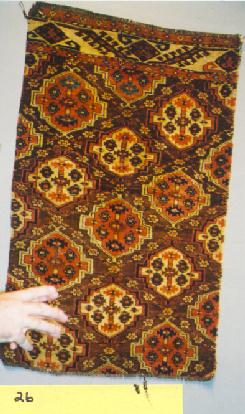
The Salon du Tapis d'Orient is a moderated discussion group in the manner of the 19th century salon devoted to oriental rugs and textiles and all aspects of their appreciation. Please include your full name and e-mail address in your posting.

This is a Chodor main carpet fragment that you have seen before. It is in the first image in this photo essay, when we were first introducing Dennis. It is wonderfully detailed and full of good color. The little we can see of what looks like a meander border looks very archaic to me for reasons that I can't explain.
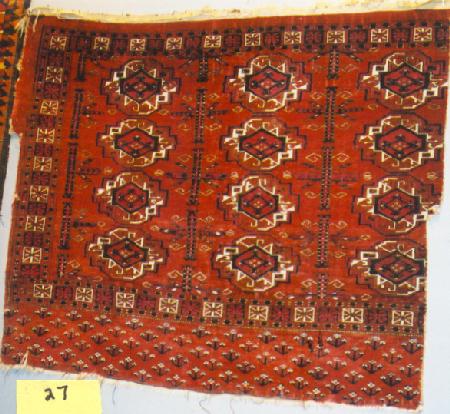
Dennis had one Saryk piece, a fragment of a chuval. The characteristic cruciform center of the main gul that we mentioned in discussing an earlier Ersari chuval is present here and the rendition of the minor gul is unusual.
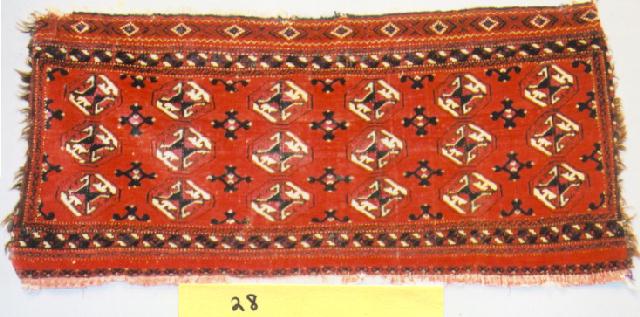
Salor pieces are rare at Textile Museum Rug Mornings. Even the TM is chary about showing what they have frequently enough for the tastes of many of us. But Dennis had one. The ground color is a deeply saturated cherry red, the major gul is octagonal and the unusual minor gul complements it nicely without competing at all. There are silk highlights in the major guls. The borders are classic Salor simplicity. It was a joy to have this piece in my hands. Its firm handle speaks to a fully depressed warp.
That is the end of the pieces that Dennis Dodds brought for this Rug Morning presentation but, as with most of these sessions, participants were invited to bring pieces of their own and some did. Here are a few of them.

This is an Ersari/Beshiri torba/trapping.
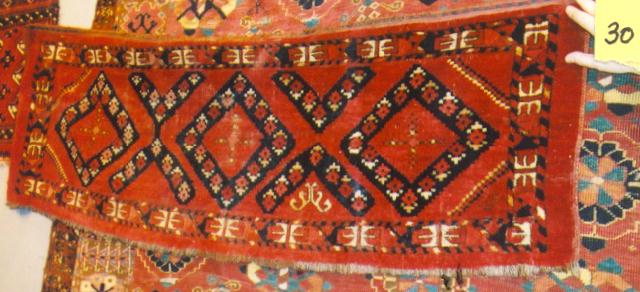
The next piece was this starkly graphic bag/trapping. We have been calling such pieces Ersari/Beshiri and the border on this piece is used by Ersari weavers but we are being cautioned anew that many such pieces are likely to have been woven by non-Turkmen Central Asian weavers.
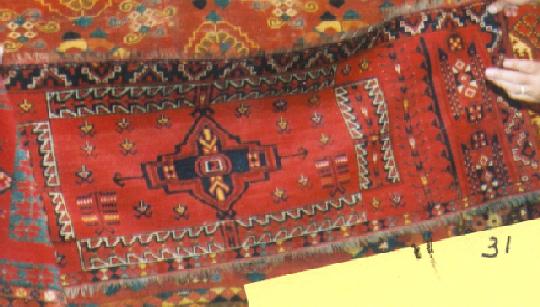
This is a bag face that we would say with somewhat more confidence (but based almost entirely on its design and color palette) is probably Ersari/Beshiri. You are only seeing three quarters of it because things were moving faster at the end of this Rug Morning and one end got covered as I took this photo.
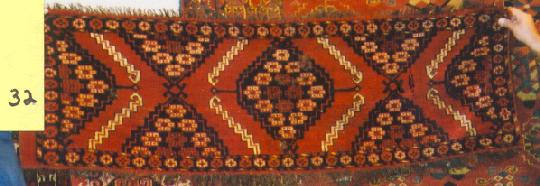
Another "Ersari/Beshiri" bag face with stark graphics.
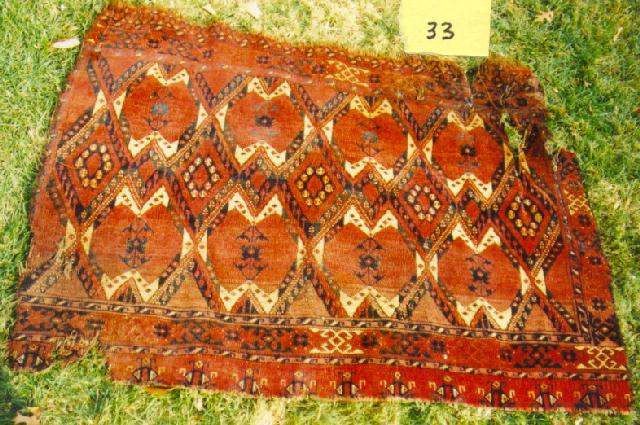
Although this is not a photo from the session, I brought this piece which I had bought on eBay and had questions about. I worried that the band of lighter color in the lower row of ikat guls might signal a synthetic dye. Dennis said the dyes looked OK to him and admired the spare drawing of the center of the ikat gul.
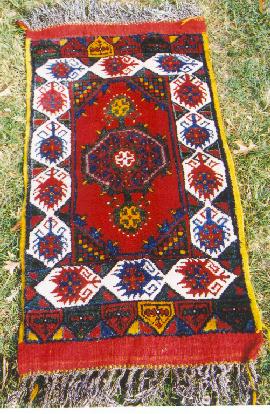
This last piece is a kind of joke that I arranged with Dennies before the session but that we didn't get a chance to pull off. Never mind, we can do it now
A few years ago I had put up on the internet another piece I own with this design and called it "Karapinar," following Brian Morehouse, who uses it for his cover image of his book on Turkish yastiks. Last year, Michael Bischof, a German rug enthusiast with some considerable knowledge of dyes and contemporary weaving in Turkey, wrote me, literally out of the blue, saying that it was not correct to describe this piece as from Karapinar, since in fact this design belonged to another village of Yomut Turkmen in Turkey who had migrated there from Khorrasan 200 years ago. Mr. Bischof and I exchanged some further emails and finally I bought two contemporary yastiks made by a weaver from this village. This is one of them.
Since Dennis also has a fine yastik collection, I thought it would be fun to bring this piece to his Turkmen session and to say the Mr. Bischof claims that this piece and this design are Yomut Turkmen, too. Too bad we didn't get to do it in the session.
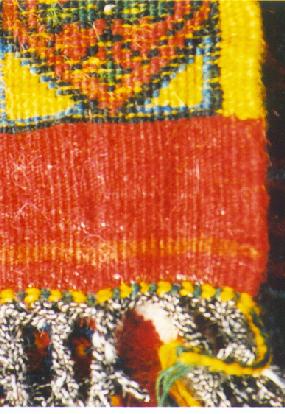
Here is a close-up of the back in case that interests you.
I do not have any particular questions or issues with which to shape this salon. I have provided numbers on each image and ask that you refer to the number as you talk about them. Any image can be made to appear in any message in the discussion. If you need help or would like us to insert it for you, simply send an e-mail to Steve Price or Filiberto Boncompagni, providing enough information to allow the message and the image(s) to be identified.
Perhaps Dennis Dodds will be moved to join our discussion but, regardless, we are in his debt (and Leigh Marsh's) for this fine Turkmen material to consider.
Regards,
R. John Howe